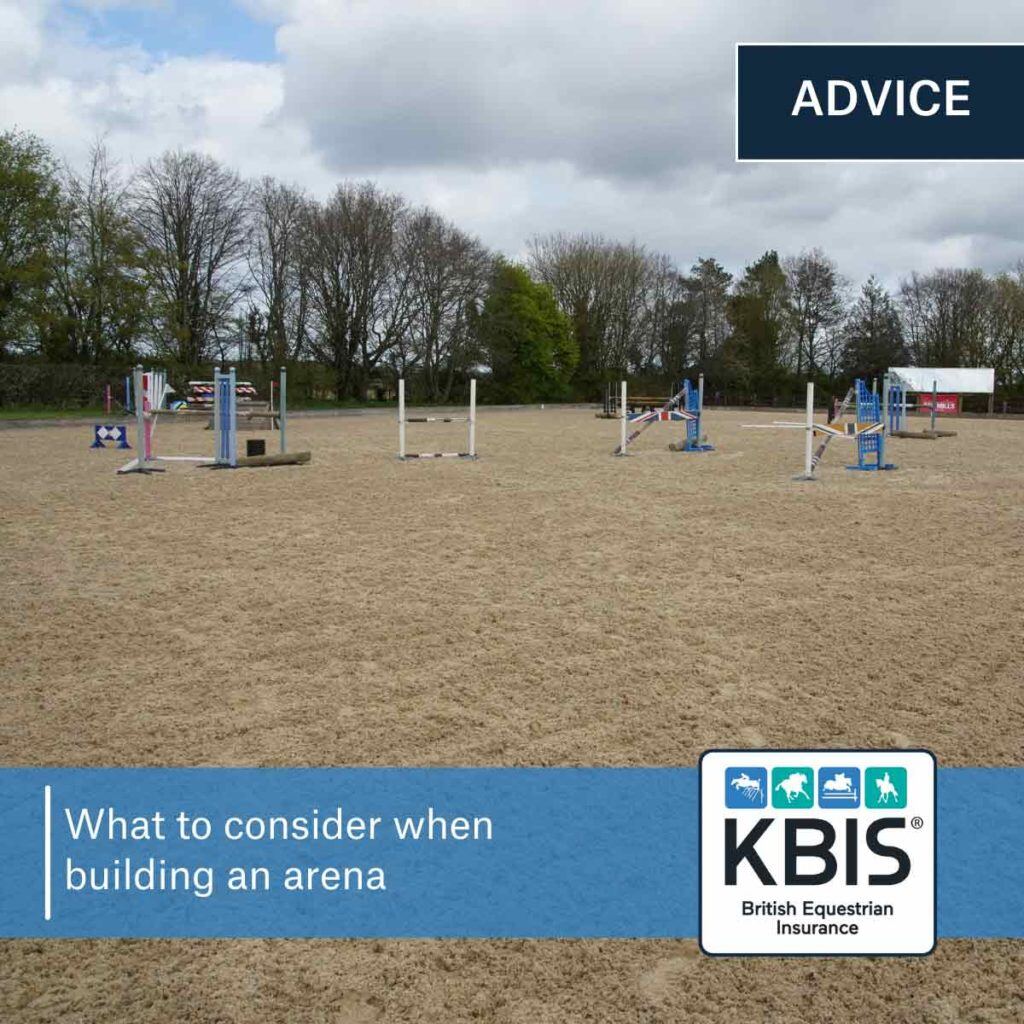‘No foot no horse’, we all know that saying – basically if the foundations are not good the horse will not last! The same is true for your arena, good foundations are key to a long-lasting, easy to maintain arena.
So, when you finally get to that point when you can put in an arena for your personal use, or need one for your equestrian business, what is the first thing you should consider? Yes of course, it must be where you are going to build, this will impact how easy it is to construct, how well it will ride and of course, how much it is going to cost.
Know your budget
But first things first although your budget will likely influence the surface you choose, you need to be sure there is enough money in the pot to complete the build properly. Cutting back on preparation or surface could be more costly in the long run and may even injure your horse.
Finding the right place to build
Assessing your land to find the best position for your arena is not just about finding a level spot with good drainage. You will need good, easy access for the construction crew and the articulated lorries and trucks that will be delivering the surface and equipment.
Heavy rainfall, frequent hard frosts, exposure to high winds – all these will take a toll on your surface, with the potential for it to puddle, freeze or blow away so, find the most sheltered area if this could be an issue.
Planning permission
You will need planning permission from your local council to build an equestrian arena. Unless you have great contacts and construction knowledge, it is a very good idea to work with an experienced contractor from the get-go. They can guide you through the planning application process, as well as advise on the surface best suited to your needs and budget. Be aware too, that if your arena is to be used after dark, you will need planning approval to add lighting.
Points to consider when choosing an arena surface
A competition facility where the arenas are in use for several hours every day, will have different requirements to a small private yard just as, an indoor arena will have different requirements to an outdoor surface.
Having a realistic idea of the time you have available for maintaning the surface, and the equipment you will need to maintain your arena is worth considering when choosing a surface. While every arena will need some maintenance, some are much less labour intensive than others. So bear this in mind when selecting your surface.
How will the surface impact your horse?
The quality of surface on which a horse is working determines the level of shock waves that transmit up the leg and the impact of these concussive forces on joints, soft tissue, and bone structure. Research has shown that firm surfaces provide more support but are less able to absorb shock waves than a softer surface, which in turn may not be supportive enough. The right surface will provide your horse with a cushioning, stable base to work on whatever your discipline and minimise potential injuries.
How does the hoof interact with the surface?
As the horse takes a stride the hoof interacts with the ground in three different ways:
Landing
In the landing phase the hoof connects with the surface. On tarmac, there is no cushioning effect or give in the ground, so the full force of the impact transmits through the hoof, up the leg to the joints and musculoskeletal system. This jarring effect is detrimental particularly to older, arthritic horses. An arena surface should allow the hoof to slide forward slightly before stopping, which softens the impact as the horse then bears weight on the hoof.
Weight-bearing
Here the soft tissues come into play as the fetlock flexes to absorb the movement ready to push off for the next stride. The surface should be cushioning enough to allow the whole sole of the foot to connect with the ground; this triggers blood circulation from the foot, up the leg and around the body.
Break over
The hoof rolls forwards to the toe as the horse pushes off to take the next stride.
Choose a surface for your discipline
If your primary discipline is show jumping the surface will need to provide a stable base and a good grip for take-off, landing and turns, while cushioning impact to minimise concussive effects on the musculoskeletal system. Dressage horses, on the other hand, need a cushioning, softer finish with a good grip.
Whatever the discipline, taking time to choose wisely and learning as much as possible about the company constructing your arena and supplying the surface is never wasted. Choose one that has great reviews and is highly recommended, with long-standing experience and well-researched surfaces.
Another consideration must be the insurance you have in place for your equestrian set-up, including your new arena. Our Property and Yard insurance policies can be tailored to your requirements specifically, so whether your arena is at home or further afield, we can provide the cover you need.
All companies will send you surface samples and be able to talk you through your own specific needs. Equestrian Direct Surfaces go one step further. With numerous satisfied customers throughout the UK, you can arrange a visit with your horse, to a yard or more, that has the surfaces you are considering in place, to try them out for yourself.
With the perfect arena for your horse why not have a look at our advice on how to warm up your horse properly.

